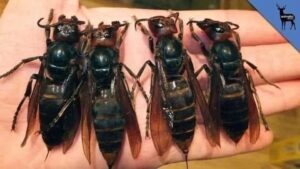IMPORTANT ALERT! DEADLY DANGER! The most dangerous insect in the world has appeared.

In recent years, the United States has faced an alarming and deadly threat from the giant killer wasp, ominously nicknamed the “murder hornet.” This invasive and highly destructive insect, considered the largest and most dangerous of its kind globally, first appeared in the U.S. in 2019 and has since spread fear and havoc.
The most recent sighting of this menacing creature was reported in Washington State in 2021, sending shockwaves through the region. The “murder hornet,” known for its aggressive behavior, was detected on August 11, just 3.2 kilometers from where it was initially identified in December 2019 near Blaine, Washington, according to the Washington State Department of Agriculture (WSDA). Measuring an imposing 4.4 centimeters in length, this insect is capable of attacking anything in its path.
As its nickname suggests, these hornets are particularly devastating to honeybee populations. Armed with powerful mandibles, they can decimate entire beehives, killing and decapitating thousands of bees. They then take over the hive, feeding on the brood to sustain their own offspring, leaving devastation in their wake.
Adding to the danger, a single sting from a murder hornet injects a large amount of venom, which can be fatal to humans. While deaths from a single sting are rare, the threat remains serious.
In response to this growing danger, the WSDA has ramped up efforts to combat the spread of these hornets. Live traps have been set in the area, and entomologists plan to tag captured wasps to track them back to their nests. The proximity of this sighting to the U.S.-Canada border has also prompted officials to install additional traps to prevent further spread.
